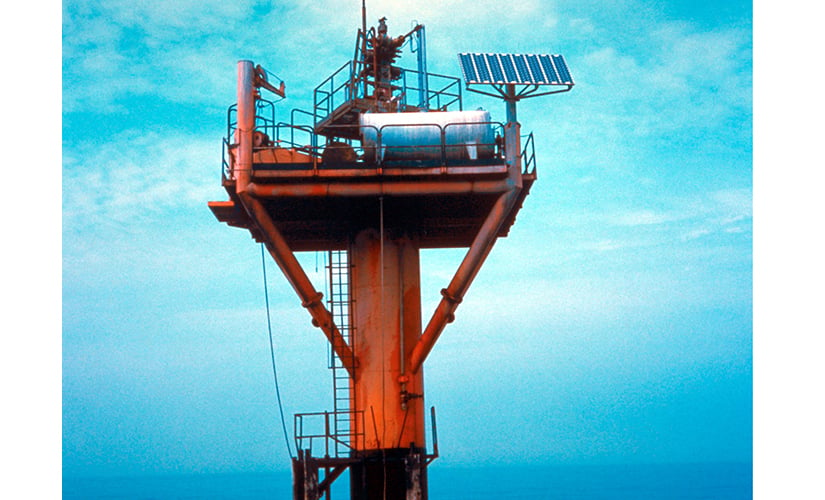Gulf Coast Offshore Transmission
The Infrastructure, Environmental Considerations, and Community Readiness for Gulf Coast Transmission Planning project examines opportunities and challenges for transmitting energy produced in the Gulf to customers on land.

The Gulf has significant generation and industrial potential that could provide a reliable, clean source of energy to customers in Florida, Alabama, Mississippi, Louisiana, and Texas. Coordinated transmission planning is required to effectively and efficiently connect energy resources in the Gulf to end users and to ensure that electric transmission facilities can adequately and economically support future development in the region. Funded by the U.S. Department of Energy (DOE), NREL researchers published a Gulf-focused literature review and gaps analysis that summarizes current knowledge and identifies gaps, especially around environmental considerations, community readiness, and infrastructure. Through this research, the team identified several key factors that could influence transmission planning. These include:
- Multiple, conflicting uses for specific ocean sites
- Opportunities to repurpose existing energy infrastructure
- Evolving energy landscapes in the Gulf.
The Gulf literature review and gaps analysis complements other research in the offshore transmission space, including:
Atlantic Offshore Wind Transmission Literature Review and Gaps Analysis, DOE Technical Report (2021)
Atlantic Offshore Wind Transmission Study, NREL Technical Report (2024)
West Coast Offshore Wind Transmission Literature Review and Gaps Analysis, Pacific Northwest National Laboratory Technical Report (2023)
West Coast Offshore Wind Transmission Study, Pacific Northwest National Laboratory
Atlantic Offshore Wind Transmission Action Plan, DOE (2024).
The report builds on this prior research by compiling information on geographical and environmental considerations, community readiness, and infrastructure needs and by identifying knowledge gaps that need to be filled to advance regional transmission planning work in the Gulf.
Key Findings
The Gulf literature review and gaps analysis report summarizes what is currently known about available infrastructure, environmental factors, and community readiness as related to offshore transmission planning in the Gulf. The following are some key findings:
- Prior to this effort, researchers had not studied energy transmission in the Gulf. This research is needed to inform regional transmission planning and adequately meet regional and future energy needs.
- The oil and gas industry already has infrastructure and workers positioned in the Gulf; new energy projects could be supported through shared transmission systems and workforce.
- Future transmission planning must consider the Gulf's highly productive ecosystem, varied coastal communities, considerable existing infrastructure, and heavy industrial foundation.
- Transmission solutions should be tailored to regional environmental concerns to minimize impacts to wildlife, habitats, and coastal resources.
- Transmission projects should include local communities in their planning efforts.
Overall, the researchers found that transmission projects will require collaborative, coordinated planning across multiple groups, including federal, Tribal, state, and local entities, to ensure new projects help meet evolving energy goals.
Contacts
Share
Last Updated April 24, 2025
